When Katharine Lee Bates wrote “for amber waves of grain” in her lyrics to “America the Beautiful,” she was referring to fields of wheat. But anyone who has watched prairie grasses ripple in the wind knows the beauty of their motion, as soothing and rhythmic as ocean waves. Switchgrass (
Panicum virgatum) brings prairie beauty to the garden and landscape, along with a color palette that varies through the seasons, from spring’s blue-green leaves to summer’s striking tan to orange tips and amber to red leaves in fall.
Native to North American grasslands from the Canadian prairies to Mexico, and from the East Coast to the Great Basin, switchgrass is the most drought- and heat-tolerant of the tallgrass prairie grasses. It requires some supplemental irrigation in areas with less than 15 inches of annual rainfall, but its long lifespan, colorful leaves and distinctive lacy cloud of seeds that attract quail and small songbirds are a welcome addition to any garden.
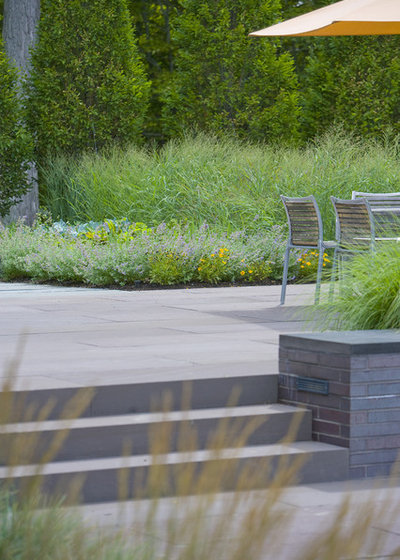
Wagner Hodgson
Botanical name: Panicum virgatum Common names: Switchgrass, wand panic grass
Origin: Native to North America from Saskatchewan and Quebec south to Florida, Mexico and Central America, and from the East Coast west to Nevada and Idaho, but not the Pacific Coast states
Where it will grow: Hardy to minus 40 degrees Fahrenheit, or minus 40 degrees Celsius (USDA zones 3 to 9; find your zone)
Water requirement: Needs supplemental water for best growth, especially in climates with hot summers
Light requirement: Full sun
Mature size: Up to 6 feet tall; bunches may spread to 3 feet wide
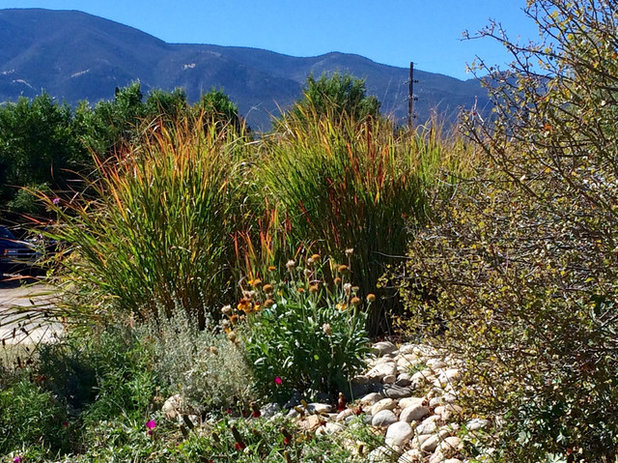
Susan J Tweit
Benefits and tolerances: Tolerates summer heat and some drought as well as seasonal flooding; deer- and rabbit-resistant when mature; offers shelter for butterflies and other insects, plus nesting habitat and seeds for small birds
Seasonal interest: Bluish-green leaves appear in late spring, reddish-purple seed heads appear in summer; leaves turn yellow to amber with orange or red accents (depending on variety) in fall, fading to a straw color over winter, when strong stems keep the tall, stout bunches erect except in heavy, wet snow.
When to plant: Fall in the northern half of its range; spring in the southern half
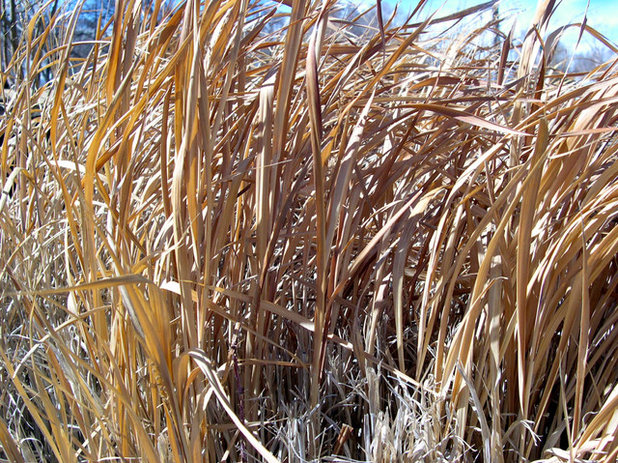
Susan J Tweit
Distinguishing traits. Switchgrass stands out from other clump-forming grasses with its large size, measuring up to 6 feet tall and 3 feet wide. Leaves grow along the length of stout, round stems, not just from the base, and bend toward the tip. Summer’s lacy seed clusters distinguish this perennial grass from other tallgrasses. The striking color change in fall beginning at the leaf tips is another distinguishing characteristic. Switchgrass is a very long-lived grass; bunches may persist for several decades, spreading outward from the middle to form a large ring.
Switchgrass’ thick clumps provide hiding cover and thermal shelter for small wildlife, including pheasants, quail, sparrows and other songbirds, as well as butterflies and other pollinators. Goldfinches, house finches, quail, doves and other seed-eaters pick the seeds off the ground after they drop in fall. Left standing over the winter, the hollow stems provide nesting chambers for native bees.
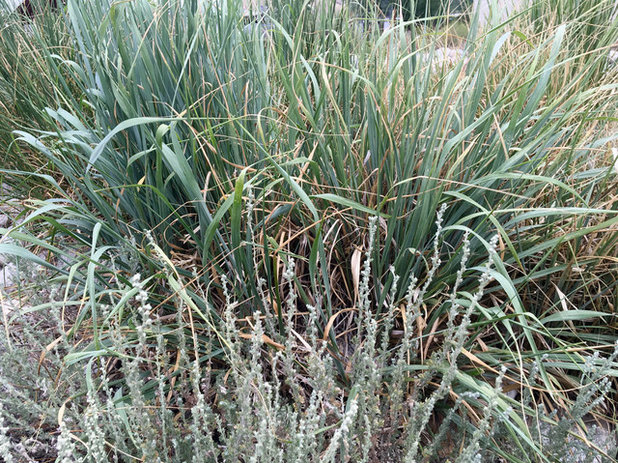
Susan J Tweit
How to use it. Its height and stout clumps make switchgrass valuable as an accent grass, a foundation planting, or a low windscreen or living fence, or planted as a back-of-the-border prairie grass.
As with any large, long-lived grass, plan for its eventual size and for the fact that, although it is a clump-former, it will spread by rhizomes. (Switchgrass is easy to control; it is not a fast spreader.) If the middle of the clump dies, simply transplant sprouts from the outside edge to fill in.
Interplant switchgrass with bunches of little bluestem (
Schizachyrium scoparium) and Maximilian sunflower (
Helianthus maximiliani) for a tall display of summer blooms and long-lasting fall color that will also provide food and habitat for small birds. The grasslike stems and deep blue flowers of pitcher sage (
Salvia azurea) and the silvery foliage of white sagebrush (
Artemisia ludoviciana) make those plants contrast well as lower plantings, along with poppy mallow (
Callirhoe spp.), with its wine-colored flowers.
Planting notes. Because switchgrass is native to such a wide swath of North America, it tolerates most soils except heavy clay. It thrives best in well-drained soils with regular moisture through the growing season and can tolerate limited flooding, as well as some drought. It is used to reclaim strip mines and stabilize dikes and earthen dams.
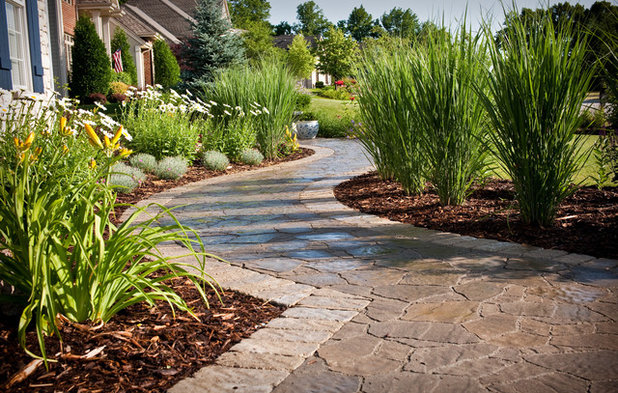
Ginkgo Leaf Studio
‘Northwind’ switchgrass (P. virgatum ‘Northwind’) growing along an entry path in MilwaukeeSwitchgrass varieties are used in a variety of applications, including windbreaks on farms, and are even cultivated for biofuel. Some of the best switchgrass cultivars for landscapes and home gardens include:
- ‘Dacotah’: Most cold-tolerant for northern gardens; shorter stature
- ‘Heavy Metal’: Very bluish foliage that turns amber in fall
- ‘Northwind’: More upright form than most switchgrass for a more formal look
- ‘Shenandoah’: Striking red to crimson leaf tips in fall; not drought-tolerant





